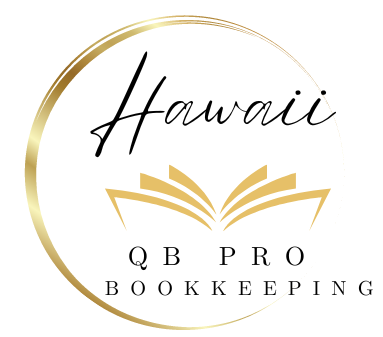Balance Your Books Fast: The Small Business Owner’s Guide to Perfect Reconciliations

Balancing your books fast is essential for keeping your small business financially healthy. Start by setting up an accounting system that fits your needs and maintain organized records. Use a step-by-step approach for reconciliation: gather documents, compare bank statements, and document adjustments. Watch out for common mistakes like overlooking small transactions or data entry errors. By taking a proactive approach, you can streamline your financial process and set the stage for smarter decisions moving forward.
Understanding the Importance of Reconciliation
Reconciliation is vital for maintaining the financial health of your small business. It guarantees accuracy in your financial records, allows you to catch errors, and helps you identify discrepancies before they escalate.
By regularly matching your bank statements with your accounting records, you’ll gain a clearer picture of your cash flow. This practice not only builds trust with stakeholders but also aids in effective budgeting and forecasting.
Plus, addressing issues promptly can save you from costly surprises during tax season. Ultimately, reconciliation strengthens your financial foundation, empowering you to make informed decisions and drive your business forward.
Setting Up Your Accounting System
To guarantee effective reconciliation, it’s important to have a solid accounting system in place.
Start by choosing accounting software that fits your business size and needs. Make certain it can handle invoicing, expenses, and reporting.
Set up a chart of accounts that categorizes all income and expenses clearly. Consistently update your records, so you’re always working with accurate data.
Establish a routine for tracking transactions, whether daily or weekly. Don’t forget to maintain backups of your financial information.
Step-by-Step Guide to Reconcile Your Accounts
Begin the reconciliation process by gathering all necessary financial documents, including bank statements, invoices, and receipts.
Next, compare your bank statements to your accounting records. Identify discrepancies by checking each transaction and marking them off as you go. Make sure all deposits and withdrawals are accounted for.
Update your books with any missing or erroneous entries, correcting amounts when needed. Once everything matches up, confirm your ending balance matches your bank statement’s closing balance.
Finally, document any adjustments made during this process for future reference. You’ve now successfully reconciled your accounts!
Common Reconciliation Mistakes to Avoid
Successfully reconciling your accounts requires a keen eye, but common mistakes can derail your efforts. One major mistake is overlooking small transactions, as they can add up and cause discrepancies.
Another pitfall is failing to match transactions correctly; verify each entry corresponds to the right date and amount. Don’t ignore bank fees or interest income—these often slip through the cracks.
Also, be cautious with data entry errors; double-check your figures. Finally, procrastination can lead to confusion, so reconcile monthly.
Tips for Maintaining Balanced Books Throughout the Year
While keeping your books balanced may seem intimidating at times, establishing a systematic approach can make it manageable throughout the year.
First, set aside dedicated time weekly to update your records, ensuring everything’s current. Utilize accounting software to automate processes and reduce errors.
Regularly review your financial statements to catch discrepancies early. Always keep receipts and documentation organized, so you can find them easily when needed.
Finally, don’t hesitate to consult a professional if you’re feeling overwhelmed. Consistent diligence and an organized system will keep your books balanced and save you time come tax season.
Need further professional assistance? When you just don’t know, call Hawaii QB Pro.

Frequently Asked Questions
What Software Tools Can Simplify My Reconciliation Process?
To simplify your reconciliation process, consider tools like QuickBooks, Xero, and Zoho Books. If you company runs within the US. Quickbooks is the recommended standard with good customer support and understanding of US. tax laws. International companies lean towards Xero. Both are online based and can are great places to keep your books safe and accessible for professional assistance.
These platforms automate tracking transactions, generating reports, and reconciling accounts, making your financial management more efficient and less time-consuming.
How Often Should I Reconcile My Accounts?
You should reconcile your accounts at least once a month.
This frequency helps catch discrepancies early, ensuring your financial records remain accurate and manageable.
If your transactions are high, consider weekly reconciliations for added accuracy.
If you have on reconciled in a while and need to do a clean up. Start from the beginning of the tax year period. Which ever tax schedule you follow.
What Documents Do I Need for Reconciliation?
To reconcile your accounts, you’ll need bank statements, transaction records, invoices, and receipts.
Gathering these documents allows you to guarantee accuracy, spot discrepancies, and maintain clear financial records for your business’s health.
Can I Reconcile Accounts Without an Accountant?
Yes, you can reconcile accounts without an accountant.
You’ll need your financial statements and transaction records.
By following systematic steps and staying organized, you can achieve accurate reconciliations on your own.
It’s definitely manageable!
What Should I Do if I Find Discrepancies?
If you find discrepancies, you should first double-check your entries for mistakes.
Then, review relevant documents to identify mismatches.
Finally, make necessary adjustments and document everything to maintain accurate records moving forward.
Conclusion
By following these steps and staying organized, you can maintain balanced books and simplify your reconciliation process. Remember, consistency is key—make it a habit to review your accounts regularly to catch any discrepancies early. Avoid common mistakes and keep your accounting system streamlined. With these tips in hand, you’ll not only save time but also gain peace of mind, knowing your finances are in order. Happy reconciling, and here’s to your business success!
Need further professional assistance? When you just don’t know, call Hawaii QB Pro.








